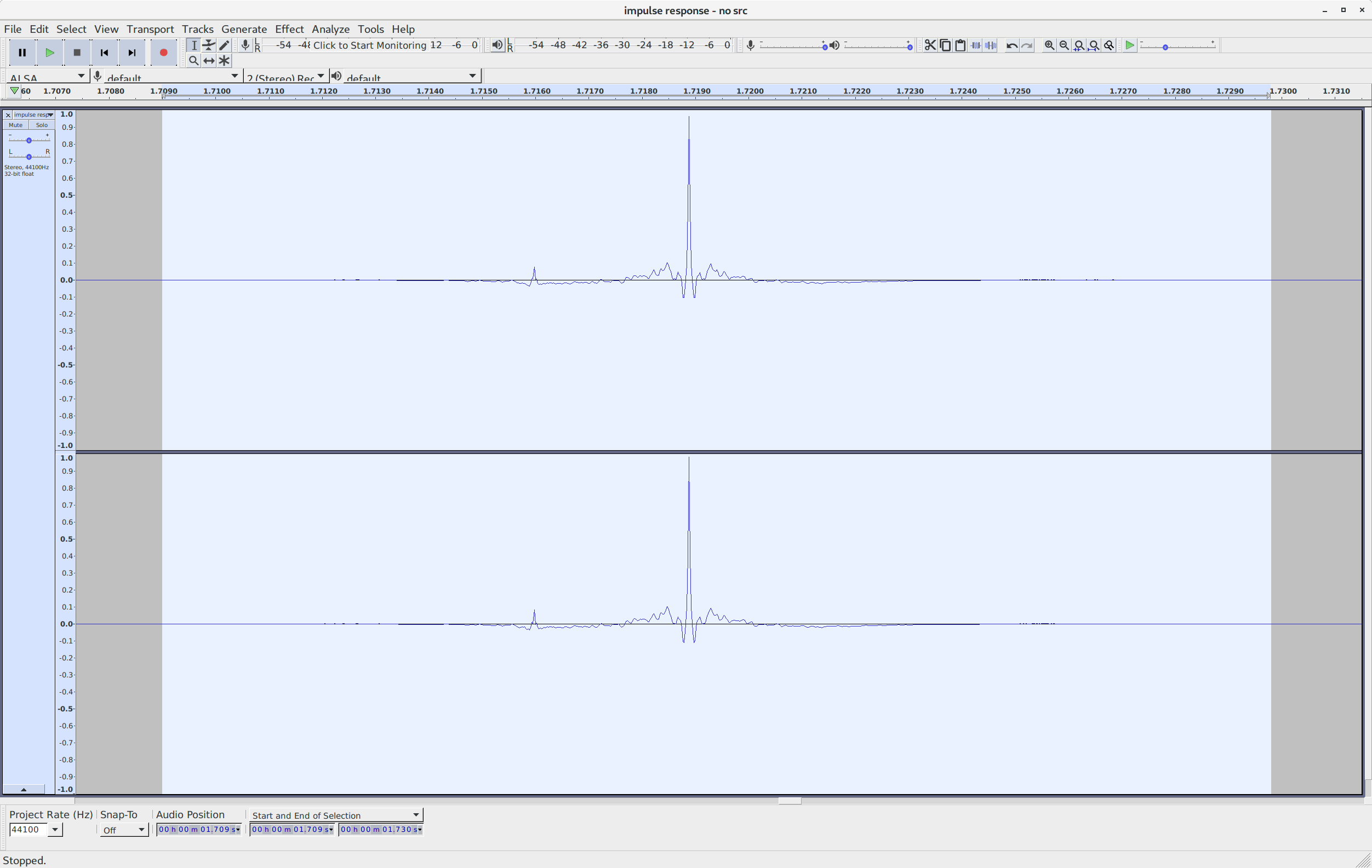It is possible to get reasonably close to the Dolby Advanced Audio output on Linux.
TLDR:
Record the result of playing a -0dBFS impulse in Windows with all effects enabled. Save that as a wav file and use it as input to the PulseEffects Convolver.
Step-by-step:
- Install
Audacity in Windows.
- Configure
Audacity to use WASAPI
- Select the loopback device as input
- Select your laptop speakers as output, making sure all Dolby Advanced Audio effects are enabled.
- Start recording
- Play an impulse audio file (you might need to do this twice,
Audacity often doesn't pick up the first impulse.
- Zoom in and select the area around the recorded impulse (see screenshot below)
- Export the selection as a WAV file and change the extension to irs
- Import this irs file into the
Convolver.
![enter image description here]()
Some notes:
Audacity isn't required, presumably any software capable of recording from the output device will be fine.
To avoid any changes introduced by sample rate conversion, set the sample rate of the output and input devices in Windows to be the same.
When recording, in Step 5, Audacity would not record unless audio was playing. This is probably due to using WASAPI. Just start recording, play the impulse and if you don't see it in the recording output as a single spike, play it again.
The screenshot is quite heavily zoomed in so that you can see the area where there is data. When selecting what to export, try to make sure the selection is roughly centered around the central peak. It doesn't have to be perfect.
As a useful check to make sure what you are recording has been processed by Dolby Advanced Audio, you can disable all effects on the output device in Windows and record the impulse a second time. This should show up as a single peak sample and not the symmetric pattern.

